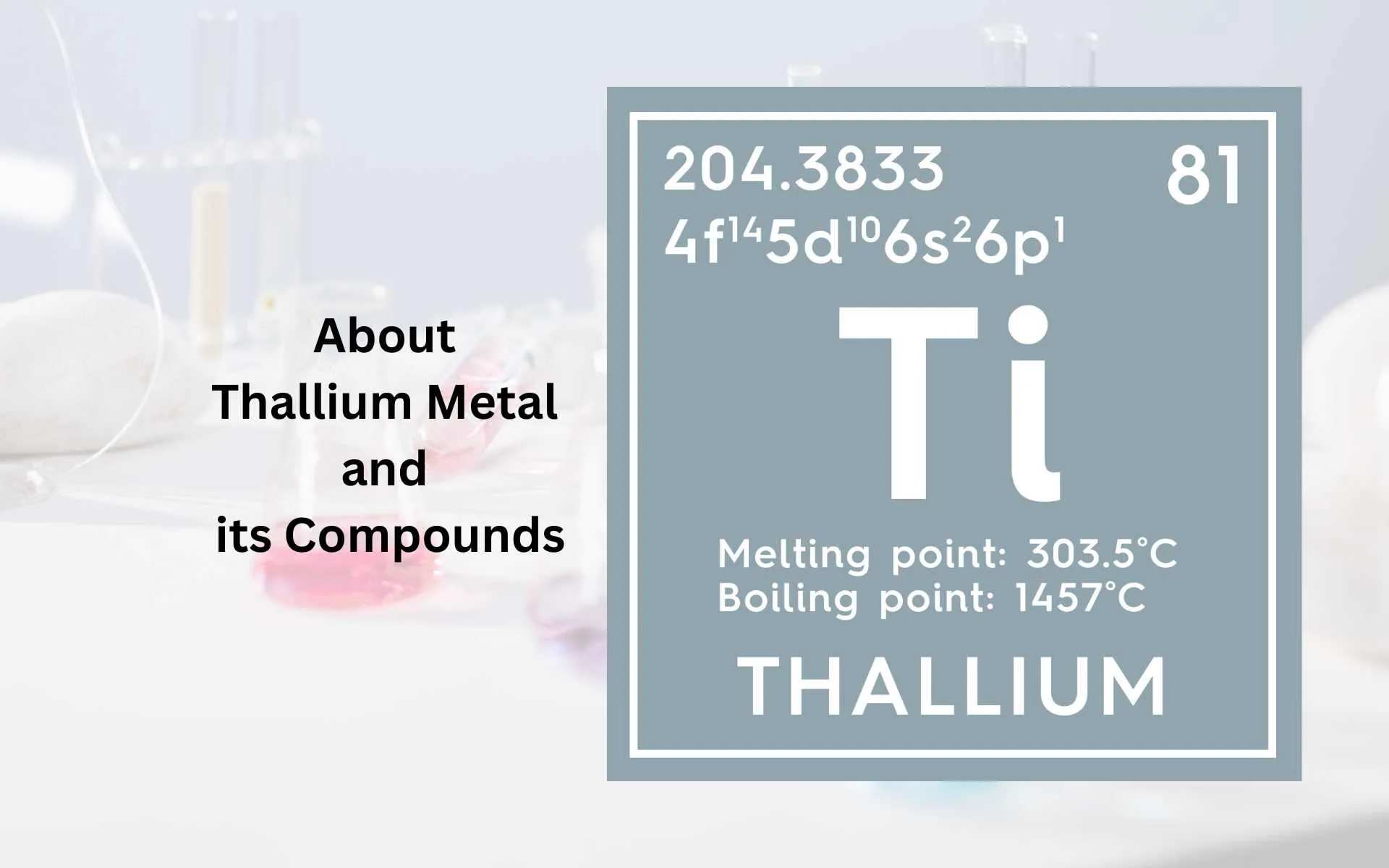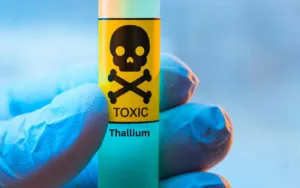Thallium is a chemical element with the symbol Tl and atomic number 81. It’s a soft, bluish-white metal that’s highly toxic.
Article generated with ChatGPT.
Table of Contents
Core Information on Thallium:

- Physical Properties:
- Appearance: Soft, malleable metal with a bluish-white hue.
- Melting Point: Low melting point at 304 degrees Celsius.
- Boiling Point: Relatively low boiling point at 1,473 degrees Celsius.
- Density: Moderately dense metal.
- Chemical Properties:
- Reactivity: Highly reactive with air, water, and acids.
- Oxidation States: Exhibits +1 and +3 oxidation states primarily.
- Toxicity: Extremely toxic to humans even in small quantities.
- Electrical Properties: Thallium exhibits semiconductor properties, making it useful in some electronic devices.
- Magnetic Properties: It doesn’t possess strong magnetic properties.
Ores of Thallium
Thallium is a relatively rare element in the Earth’s crust, occurring at an average concentration of about 0.7 parts per million. It’s often found associated with other heavy metals in various ores. The primary sources of thallium include:
- Sulfide Ores: Thallium is commonly found in association with sulfide minerals such as pyrites, galena, and sphalerite. Ores like lorandite and crookesite contain significant amounts of thallium.
- Sulfate Ores: Some sulfate minerals, like hutchinsonite and thallium-bearing epsomite, also contain thallium.
- Coal Deposits: Thallium can also be present in coal deposits, often released during the combustion of coal.
- Residues from Smelting Processes: Certain industrial processes, especially smelting of lead and zinc ores, can release thallium as a byproduct.
Thallium Compounds:
- Thallium Sulfate (Tl2SO4): It’s a colorless, odorless crystalline solid. It’s highly toxic and poses severe health risks.
- Thallium Acetate (Tl(CH3COO)3): This compound is toxic and can cause severe health issues if ingested or inhaled.
- Thallium Chloride (TlCl): A white crystalline powder used in some specialized optical materials. It’s toxic.
- Thallium Nitrate (TlNO3): It’s a colorless or white crystal that’s also toxic and poses health risks.
Health Effects:
Thallium and its compounds are extremely toxic to humans. Exposure, even to small amounts, can cause severe health issues such as:
- Nervous System Damage: Neurological problems including nerve damage, paralysis, and loss of coordination.
- Digestive Problems: Severe gastrointestinal issues including vomiting, diarrhea, and abdominal pain.
- Cardiovascular Issues: Damage to the heart and blood vessels.
- Hair Loss: Thallium poisoning often results in hair loss.
Handling any thallium compound requires extreme caution and adherence to strict safety protocols in a laboratory setting due to its high toxicity and potential health risks.




